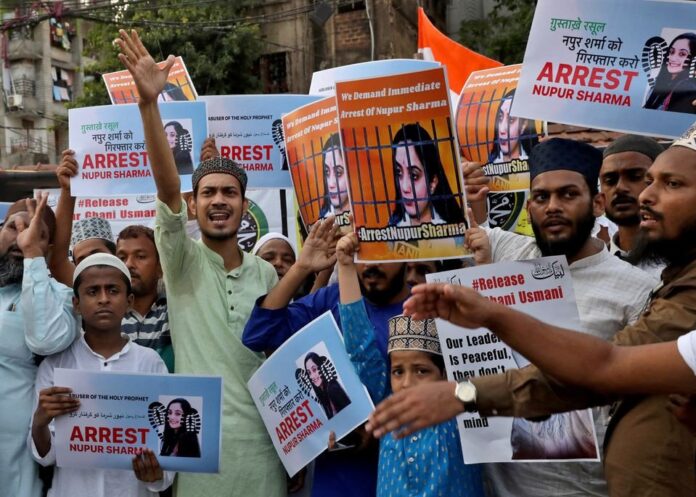CITY NOTES
There seems to be a strange sort of violence in the air. Over the border, there are riots taking place over the killing of a Hindu tailor, Kanhaiya Lal, in Udaipur, Rajasthan, because he retweeted blasphemous remarks against the Holy Prophet (PBUH), originally uttered by Nupur Sharma, the BJP spokesperson who started the whole affair by her blasphemous remarks on a TV show. The two men who killed him have also been arrested.
I personally was fearful for her life, not because it had been threatened, but by remembering that there were six years between the original blasphemy by Mahashe Rajpal in 1923 and his killing by Ghazi Ilam Din Shaheed in 1929. Just because she’s alive doesn’t mean she’s off the hook. But this is the first I’ve heard of someone being killed for a retweet.
It made me realise that this is the first blasphemy in the age of social media. Nobody was out here retweeting Rajpal’s stuff. Even Salman Rushdie’s Satanic Verses were a little early for social media, not to mention the copyright issues. Back in the day, though, if the Internet had been there, the first thing that would happen would have been some bright spark putting the offending pamphlet on the Net, probably as a pdf file.
Blasphemy, it seems, has never been easier. The cases where one person has dreamed that another person has blasphemed are still rare, but one woman has been killed for such blasphemy. This must be a result of the Internet age, where the concept of virtual blasphemy crept in.
I mean, when you murder someone, you actually have stab or shoot him or her; if you steal, you have to physically take away something tangible. But when you blaspheme, you just have to utter words. It’s like slander or libel in that respect. And as the recent court case has proved, even Johnny Depp’s reputation is valuable.
And in the same way, the attack on Ayaz Amir showed that our tendency to violence is growing. Well, the attack on him came after he targeted three bodies when addressing a seminar on regime change.
First, he addressed the PTI itself, then property dealers and then sensitive institutions. That’s a nexus that is very powerful. But personally I think the PTI is falling down by not blaming Nawaz Sharif. What motive could he possibly have? What Iago in Shakespeare’s Othello is supposed to have had, according to one critic: motiveless malignity.
The weather is keeping pace with all of this, and is showing a sort of motiveless malignity of its own. Well, motiveless is probably not the right word. Mindless is. But I don’t think there’s any malignity involved. After all, the weather has never been concerned with whether people can tolerate it. And it’s all relative.
Certain portions of the earth prevent human survival, like the Arctic or Antarctic, or the Sahara Desert. With global warming, the ice-wastes will shrink, and the deserts grow. Lots of places where people can live, they will no longer be able. And then there’ll be hidden costs. Houses designed for a climate which has a winter may be rendered redundant, as winter disappears.
I wonder whether they’ll need a new Punjab Assembly. The present one yielded a CM with some difficulty, and the Lahore High Court has obliged Hamza Sehehbaz to face a fresh election. The date set is beyond that of the by-elections for the 27 seats vacated by disqualification.
Of course, Hamza would have to fall on his sword if any of those by-elections were to be lost. Even when one’s government does not depend on it, a CM makes sure that by-elections are won by his side. If his party already held the seat, it must be with an increased majority.
CMs are not supposed to hesitate at the kind of rigging that Imran fears will happen. They must do what it takes to ensure positive results. I’m afraid that the human tsunami generated by the Parade Ground rally may not be enough to stop that rigging. Imran’s biggest danger is that the Pakistani voter might play a treacherous role.





















